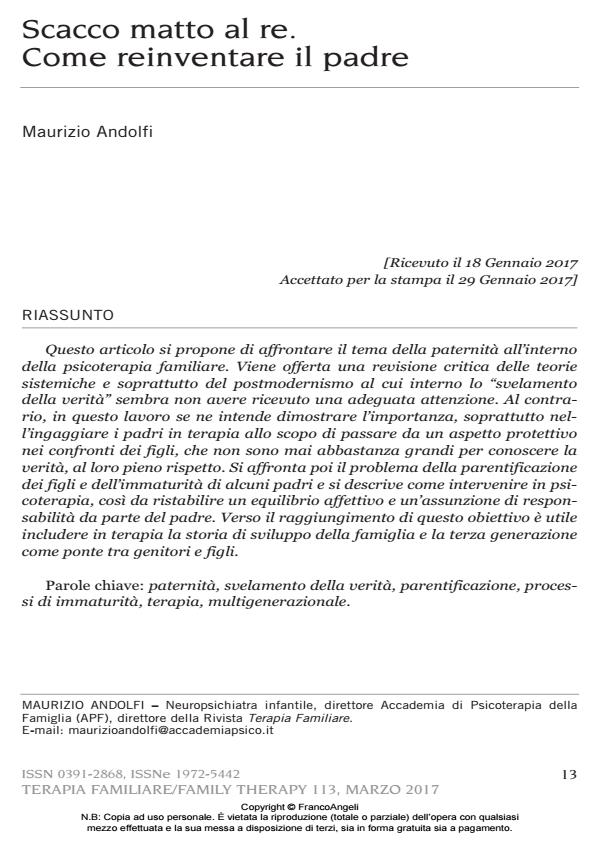Scacco matto al re. Come reinventare il padre
Journal title TERAPIA FAMILIARE. Rivista interdisciplinare di ricerca ed intervento relazionale
Author/s Maurizio Andolfi
Publishing Year 2017 Issue 2017/113
Language Italian Pages 26 P. 13-38 File size 157 KB
DOI 10.3280/TF2017-113002
DOI is like a bar code for intellectual property: to have more infomation
click here
Below, you can see the article first page
If you want to buy this article in PDF format, you can do it, following the instructions to buy download credits

FrancoAngeli is member of Publishers International Linking Association, Inc (PILA), a not-for-profit association which run the CrossRef service enabling links to and from online scholarly content.
This paper describes how to engage fathers in family therapy. It starts from a critical review of systems theory and postmodernism around the topic of the truth and family secrets. The Author describes how to challenge fathers’ resistances and to motivate them to reveal the truth to their children in therapy. The fundamental passage from being protective to being respectful of children is outlined too. The process of immaturity transmitted through generations can bring children to perform adult and responsible roles instead of their fathers. Then, the third older generation can be activated and considered as an emotional bridge in connecting fathers and children in order to transform inverted roles and responsibilities.
Keywords: Fatherhood, truth, parental child, process of immaturity, therapy, multigenerational.
- Disturbo oppositivo provocatorio: dalla diagnosi al trattamento in un'ottica sistemico relazionale Caterina Nardis, Costanza Giordani, Michela Quintaiè, Giulia Meneghetti, Grazia Armenia, in TERAPIA FAMILIARE 138/2025 pp.19
DOI: 10.3280/TF2025-138003
Maurizio Andolfi, Scacco matto al re. Come reinventare il padre in "TERAPIA FAMILIARE. Rivista interdisciplinare di ricerca ed intervento relazionale" 113/2017, pp 13-38, DOI: 10.3280/TF2017-113002